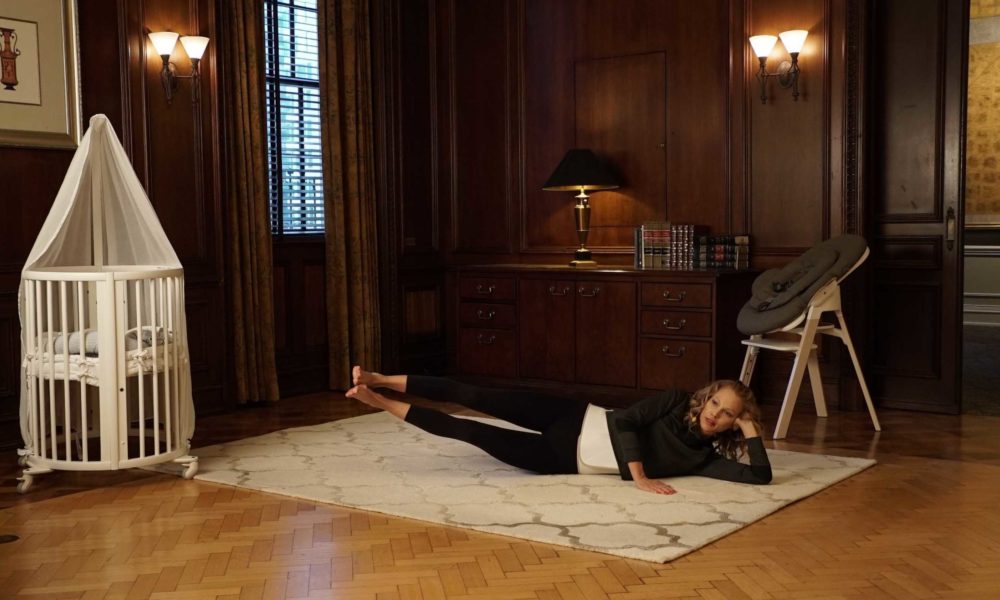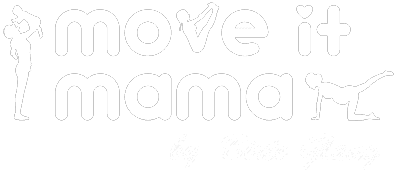Dear mom, today we are once again talking about a topic that causes a lot of uncertainty in new moms. The right behavior after birth: How long exactly does the postpartum recovery last? Am I really not allowed to get out of bed at all? When can I start doing sports again? Many moms, including MOVE IT MAMA users, are unsure and afraid to start right after giving birth. I’ll explain to you what the postpartum recovery is all about and what the advantages are for you if you start gentle gymnastics units in the first few weeks after childbirth and what they look like….
What does postpartum recovery mean exactly and how long does it last?
In the so-called postpartum recovery, the main thing is to build up a bond with your baby. After the birth, the first thing moms have to do is recover from the stresses and strains of the birth. This is a very emotional time, especially when you become a mom for the first time. It is a total change and you have to get used to the new everyday life of a mom and become familiar with the situation. That’s why you should allow yourself – as much as your Mini-Me allows – a lot of relaxation and rest. It is important that you try to get enough sleep during this time. But walks in the fresh air are just as important.
The exact meaning and duration of the postpartum period varies from country to country. In Western countries, for example, it lasts between four and eight weeks, depending on whether you had a vaginal birth without complications or a Caesarean section. In Germany, for example, it is common for a midwife to visit you every day immediately after the birth to show you the first steps in handling your newborn. She takes care of your baby’s well-being overall, as well as your own. In the U.S. it’s different, moms (like me shortly after the birth of my little one) have to manage on their own.
Bleeding postpartum (lochia)
During the postpartum period, lochia also occurs. After the birth of the child, the uterus contracts, causing placenta to detach from the uterine wall and creating a wound area that must heal. This healing process is accompanied by bleeding, called postpartum vaginal bleeding (lochia).
The duration of the lochia differs from mom to mom, and in breastfeeding women it even dries up a little faster.
In the course of the healing process and the involution of the mama, the amount, appearance and composition of the lochia changes. For example, in the first weeks after birth, it tends to be bloody. The bleeding is heavier than a normal menstrual period, especially in the first few days, and consists of lymph fluid, tissue debris , blood fragments and bacteria. You will need extra-large pads and underpads. During this time, you should also take care of your hygiene, wash your hands thoroughly, especially if you have come into contact with lochia (especially before breastfeeding).
In the second week, the discharge becomes weaker and already changes its color from brownish to later yellowish. From the third to fourth week, the flow is whitish until it stops after about six weeks.
However, everything sounds more unpleasant than it is, thanks to the little baby who demands your full attention, you will rather put this away as a trifle 🙂

When is the right time to start exercising?
Many moms actually associate “postpartum” with a time of no exercise and staying in bed, but is that really true and is it something you should do? As a new mom, you can’t put too much stress on your body, that’s for sure. And I say that even as an absolute sports fan! The postpartum period is for you to regenerate and you should definitely give yourself that time as well.
There are many myths, half-truths and well-intentioned advice that make moms fear and worry. But the truth is you can and SHOULD start with gentle gymnastics right after birth! Especially pelvic floor stimulation exercises. In our Special 15 program we have put together very special stretching and relaxation exercises as well as breathing meditation for you. So you can start safely and with professional guidance right after birth. We put an end to the myths and explain the benefits for you.
My tip: I actually started the Special 15 program in the first week after birth, sitting and lying in bed. The program had not yet been shot, but the experts had of course already developed it and so I was allowed to test it directly. This was especially advantageous, because in the USA there was no midwife to come to me. In Germany, a good midwife may also start the first exercises for pelvic floor stimulation and removal of water retention with you in the first days after birth. Of course, it is important that you listen to your body! If it gives you clear signs that it needs a little more time to recover, then you should definitely give it that.
What exercises may I do during the postpartum period?
After the birth it is important to support the regression, stimulate the weekly flow, stimulate the pelvic floor muscles and activate abdominal muscles. Besides, your soul must also get used to “being a mommy” or maybe a mommy of now two or even more children.
So it’s important not only to get back into shape physically, but also mentally, so that you can be there for your little one again with full mommy power.
Breathing exercises
For body and mind, breathing techniques and meditation help you sort out your thoughts and switch off for a moment to recharge your batteries. Breathing exercises are much more than “just” a mental benefit.
The abdominal muscles are directly linked to the pelvic floor and many breathing exercises activate both abdominal and pelvic floor muscles. Both areas that have been properly stressed by pregnancy and especially by childbirth. In addition to “Breath Work”, a few very simple movements that midwives often do with you at home in the first days after birth will also help you.
Posture exercises & walks
Besides breathing exercises, posture exercises are the secret to mobilizing and strengthening the pelvic floor and abdominal muscles.
During short walks, you can consciously think about an upright posture: pull up through the top of your head while your tailbone and pubic bone push towards the ground.
Walks stimulate your circulation. I recommend that you increase your walks from an initial 15 minutes to a later 60 minutes during the first 6 weeks, depending on your birth injuries.
Gentle gymnastics and stretching
You can start with the right gymnastic exercises for the postpartum phase already one to two days after the birth (yes, you heard right!). By the way, this is also advised by sports scientists and midwives!
At MOVE IT MAMA we call this phase the so-called postnatal phase 0, which also includes the Special 15 program. In one of our past blog articles we go into detail about this program.
Gymnastic exercises, such as the classic so-called venous flap, help with complaints such as swollen feet, activate the venous and lymphatic flow and thus transport excess water away.
A targeted but simple stretching will also help you especially against possible posture damage caused by frequent bending over while breastfeeding, changing diapers and cradling the baby. For this, please be sure to check out the postnatal phase 0 workouts and especially the Mamas Special 15 in the MOVE IT MAMA app.
But please be careful, because too much and the wrong gymnastics can hurt. But so can too little! For the sports freaks: this doesn’t mean you can start directly with challenging workouts in the first weeks. These are absolutely taboo, no matter how fit you were before. If you overload your body during this time, it can lead to total physical exhaustion later on, which will last for a long time. Likewise, you significantly increase the risk of the so-called postnatal depression….
My experience: with all the different advice and pregnancy myths, I would have also been totally confused about when to start mommy exercises. Therefore, I have developed with a team of experts also for this phase the optimal exercises to take away any uncertainty from you dear mom and to accompany you already in the entire postpartum phase.
Dear mom, as you can see, the postpartum period is a very special phase in which you must pay special attention to your body. You must not overload your body, but you should definitely start with gentle gymnastics to accelerate the healing process and the recovery.
So look forward to these special weeks. I wish you a great time and look forward to accompanying you as your personal trainer during these weeks with the MOVE IT MAMA app.
Keep it Moving,
Yours, Birte.
Try move it mama 7 days for free
We give you a trial week in which you can test MOVE IT MAMA free of charge and without obligation.


